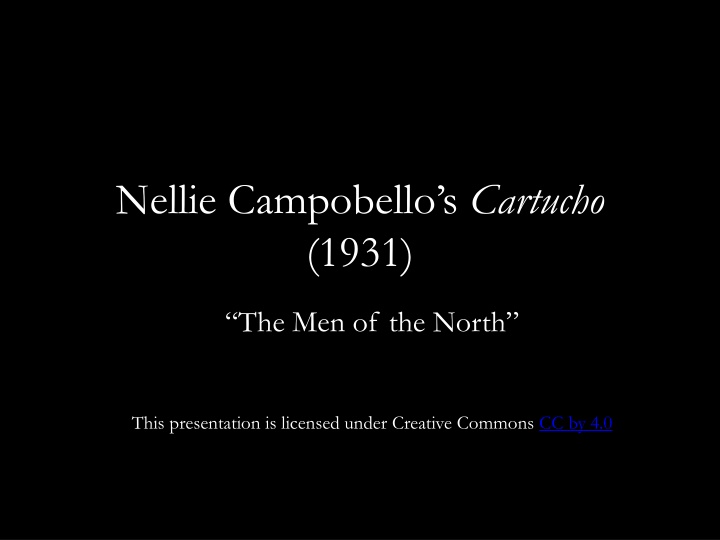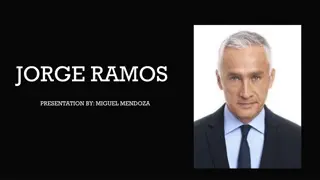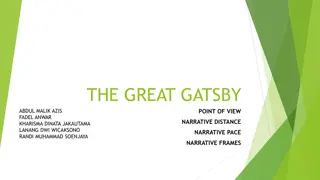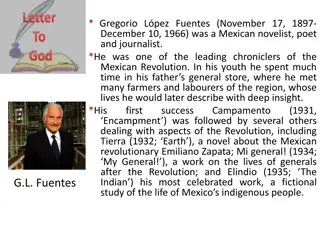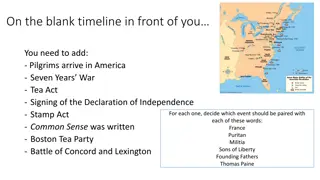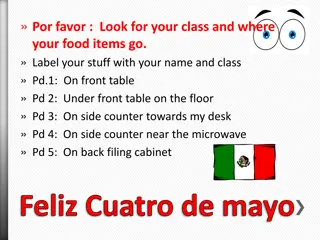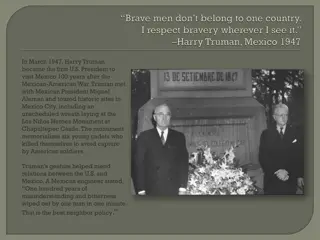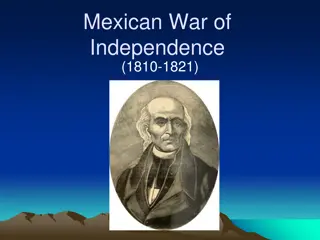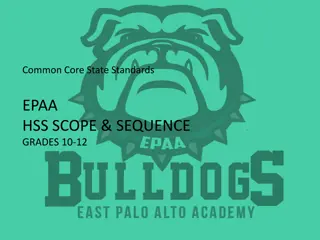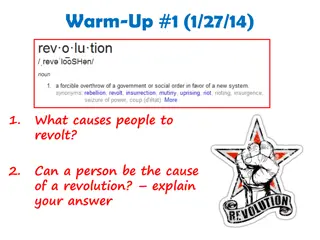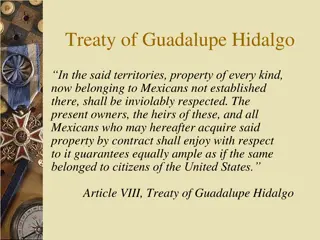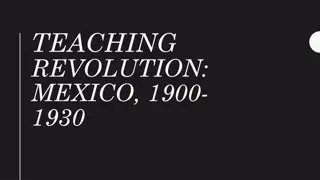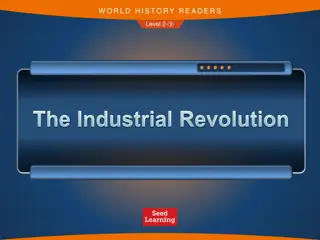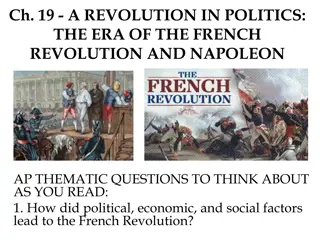Mexican Revolution: Narrative Analysis & Creative Activities
Delve into Nellie Campobello's "Cartucho" to explore the Mexican Revolution's key players, themes, and perspectives through engaging activities. Analyze the childlike narrative style, decode the symbolic "Men of the North," and visualize their personas through Instagram, Twitter, and Facebook posts. Enhance your understanding of this pivotal historical period with hands-on group assignments and discussions.
Download Presentation

Please find below an Image/Link to download the presentation.
The content on the website is provided AS IS for your information and personal use only. It may not be sold, licensed, or shared on other websites without obtaining consent from the author.If you encounter any issues during the download, it is possible that the publisher has removed the file from their server.
You are allowed to download the files provided on this website for personal or commercial use, subject to the condition that they are used lawfully. All files are the property of their respective owners.
The content on the website is provided AS IS for your information and personal use only. It may not be sold, licensed, or shared on other websites without obtaining consent from the author.
E N D
Presentation Transcript
Nellie Campobellos Cartucho (1931) The Men of the North This presentation is licensed under Creative Commons CC by 4.0
Warm-up: What do you remember? With a partner, decide whether the following statements about the Mexican Revolution and its precursors and key players are T (true) or F (false). 1. T F Pancho Villa is remembered today as the rebel of the South for his leadership of peasants in the Morelos region of Mexico. Emiliano Zapata: Rebel of the South; 2. T F of the Revolution. Diego Rivera was the dictator that reigned in Mexico prior to the start Porfirio D az: El porfiriato (1876-1910) 3. T F The Mexican Revolution lasted for 10 years, but the problems that sparked it continue to plague Mexico today. Poverty, corruption, lack of recognition of peasant and indigenous groups rights 4. T F The two main revolutionary factions mentioned in the first part of Cartucho are the zapatistas and the villistas. The villistas and the carranzistas (followers of Venustiano Carranza (1917-1920)) 5. T F Speaking of cartucho, a cartucho is Spanish for a type of rifle used during the Mexican Revolution. Cartucho: bullet cartridge 30-30: rifle
He Why does Campobello title the first chapter He ? Who is he ? Is he important or not? How do we know? In class on Friday, we determined that a narrator is the voice that tells a story in a written work. What type of narrator/story-teller does Campobello have and how do you know? What clues are available to readers to determine the type of narrator?
Picturing the Men of the North The narrative style of a child is very visual, vivid, and emotional, similar to how we use/interpret social media in our lives everyday (instagram, snapchat, facebook, twitter). Each group will re-create the image of the man described in the assigned chapter in one of the three ways. For all options, it will be necessary to share your thoughts on the whiteboard. 1)Instagram it! Draw a picture, according to the narrator s description, of the man of the north in your chapter on the whiteboard. Include the symbols of the revolution mentioned in the description (30-30s, sombrero, etc.) and put a short caption under your image. 2) Tweet it! Combine a series of #hashtags that best reflect the situation described in your chapter. Be prepared to justify your selection of the hashtags 3) Post it! Write a Facebook post that best reflects the personality of the man described in your chapter. You can accompany your post with an image and/or a theme song if you want too!
Distribution of chapters for groups Groups 1/2: El as Group 3/4: El Kiril Group 4/5: Colonel Bustillos Group 6/7: Bartolo from Santiago Group 8/9: Agust n Garc a
Conclusions: Childlike Perspective We are going to divide the class into five groups of 3 people each. Each group will be assigned a chapter from today s reading and will be asked to answer the following questions in relation to their chapter: 1) What aspects of this chapter reflect Campobello s childlike perspective? What aspects(if any) seem to indicate the presence of a more mature narrator? 2) How does Campobello introduce the idea of Revolution in your chapter? 3) What strategies does she use to draw the reader in (or to repulse us)?
For Wednesday The Executed: Executed without bullets Babis sentence Nacha Ceniceros Martin L pez sSnapshots Nacha Ceniceros
